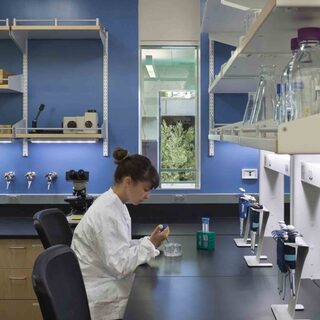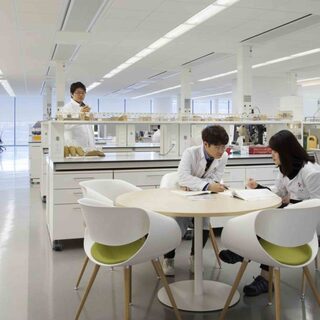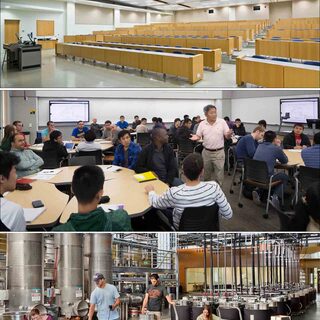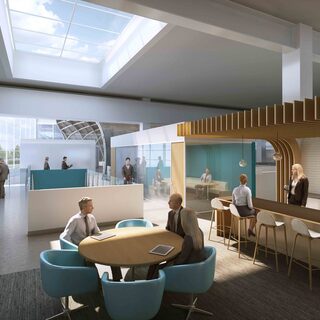Tradeline's industry reports are a must-read resource for those involved in facilities planning and management. Reports include management case studies, current and in-depth project profiles, and editorials on the latest facilities management issues.
Latest Reports
Innovation Hub in Lake Nona Medical City Serves Health and Life Sciences
The 92,000-sf, three-story GuideWell Innovation Center, located in the heart of the Lake Nona Medical City health and life sciences park in Orlando, Fla., is designed to be the epicenter for the development of new healthcare solutions. The building—which provides space for long-term lease, short-term projects, meetings, and social gatherings—can accommodate wet lab and office uses with an infrastructure that encourages the collaboration necessary to help companies move their ideas from brainstorming to commercialization.
Biocontainment Lab Designs for Resource-Limited Regions Bring Consistency, Cost Predictability, Sustainability Benefits
A new approach to the design of diagnostic labs in resource-constrained settings reduces risk and improves outcomes while accelerating the project timeline and lowering costs. The approach is based on the concept of One Prototype, which uses similar design modules as a starting point for each lab facility, whether new construction or renovation, no matter what the scale.
New Scientific Workplace Promotes Collaboration and Innovation by Removing Barriers
The new scientific workplace (NSW) transcends departmental and organizational boundaries to create a high-performance open environment that fosters multidisciplinary collaboration, creativity, productivity, innovation, and product development. While the concepts of multidisciplinary teamwork and open buildings are not new, the NSW uses an overarching approach to ensure a facility is flexible enough for future development, and provides an environment that attracts top scientists.
No Shortage of Demand for Maker Spaces
Many young people entering academia and the workforce today have grown up with “maker spaces,” where equipment like 3D printers helps bring together teams creating in the physical world. The spaces—available in schools, libraries, and community centers, as well as universities and corporations—teach technical skills but also foster soft skills, like collaboration and project planning. Successful maker spaces can be popular and productive, drawing in visitors, donors, and prospective students. But they require thoughtful planning to manage the demand for space, and effective governance for budget, safety, and training, while also leaving room for the experimental and creative spirit the spaces seek to encourage.
How Startup Design Principles Can Improve the Performance of Academic and Research Space
Modern research and academic facilities are increasingly adopting design principles typically used by small, fast-growing startup companies that depend on flexibility, innovation, and collaboration to succeed. Open workplace settings, dedicated collaborative spaces, smaller work teams, onsite entertainment zones, and shared support hubs are all examples of design features that are being deployed by larger research institutions and other organizations to improve performance and leverage changing demographics for better outcomes.





